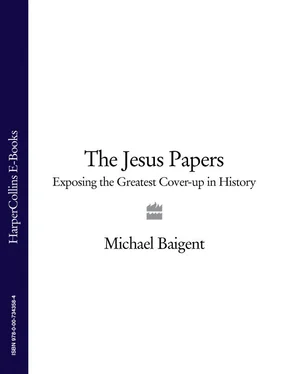Running constantly throughout Josephus’s accounts is talk of Zealots, soldiers and civilians alike, committing suicide rather than fall into the hands of the Romans. The most famous case is that of the mass suicide at Masada, where 960 people killed themselves. The ideology was widespread; armed resistance to Roman rule was a corollary. Even Josephus was involved in a suicide pact—which he managed, by treachery, to survive. But there were also accounts such as the one at Gamala, where five thousand people killed themselves. To kill yourself is one thing; however, to kill your wife, your children, and then yourself is something much greater. What was going on here?
The Zealots believed that if they died in a state of ritual purity, they would be resurrected together in accordance with the prophecy of Ezekiel: “I mean to raise you from your graves…and lead you back to the soil of Israel” (Ezekiel 37:12-14). 24 Further, they believed that those who died together would be resurrected together. So the Zealot warriors chose not just to die but to die in the company of their family. Had they been captured, they would have been separated, and the women and boys would have been dispatched to the brothels, where they would have lost their ritual purity, preventing them from any hope of resurrection. 25
Jerusalem was besieged by the legions of Titus. Little mutual respect or chivalry was evident on either side. All fighters captured were crucified, and when that became commonplace, the soldiers amused themselves by nailing up their victims in various strange attitudes. So many were executed that the Romans ran out of room for the crosses and ran out of wood to make them.
On 29 August A.D. 70, and in line with the prophecy of Isaiah, the Temple was destroyed in a display of butchery without restraint. Over the following days the rest of the city was taken. Once the Romans held Jerusalem, they burned the remaining houses and tore down the defensive walls. The city was completely destroyed. All captured fighters were slated to be executed, civilians over seventeen were sent to labor in Egypt, and those younger were sold. Great numbers of the fighters were reserved for death in the Roman arenas. Many were exported to the Roman provinces to die as gladiators or to be torn to pieces by wild animals, to the delight of idle crowds; others were taken by Titus on his leisurely march up the coast. At every town he held displays in the arena where his Jewish prisoners were set upon by animals or forced to die in large battles for the spectators’ entertainment.
During the siege of Jerusalem, Vespasian had been traveling, showing himself as emperor. He returned after the fall of the city and shortly after his return celebrated his brother’s birthday with the death of over 2,500 Jewish prisoners in the arena. Later, in Beirut, he celebrated his father’s birthday with even more deaths. All the while he was planning his triumphal entry to Rome bearing treasures and prisoners, including some of the leaders of the revolt whom he would have executed. The times were harsh.
For the Jewish people, this was a disaster of such a magnitude that even they, having once stood amid the smoking ruins of their Temple, could not even begin to comprehend it. In a religious sense, it was a second exile; the Temple, the House of God, the central bulwark of their religion, was gone. Jerusalem itself was lost too; Jews were not even allowed into the city, which had been renamed Aelia Capitolina. It seemed as if God had abandoned them. All around the world anti-Jewish feeling mounted, and rioting and killing destroyed the influence, power, and respect that Jewish merchants, philosophers, and politicians had once held. Even well-established communities suffered a terminal decline as tens of thousands were killed, and so those who had managed to survive kept their heads down. Some sicarii were able to flee to Alexandria, where they foolishly tried to encourage anti-Roman strife. So determined were they that they murdered some prominent members of the Jewish community who opposed them. In retaliation, the Jewish community rounded up the sicarii and gave them over to the Romans, who tortured them to death.
A small flame flickered on, however, in the town of Jabneh on the coastal plains of Judaea. There, under Johanan ben Zakkai, a leading Pharisee who had escaped Jerusalem and had requested rule of the town from Vespasian, the Sanhedrin was re-formed and a school was established. It was there that rabbinical Judaism was born. This significant favor from the emperor reveals that Johanan, like Josephus, was prepared to reach an accommodation with the invaders—something the Zealots had refused to do. Furthermore, Johanan is reported to have also proclaimed that the messianic “Star” prophecy referred to Vespasian. 26
The scholars at Jabneh revived the halakhah —the legal side of Judaism comprising the law handed to Moses on Mount Sinai and the interpretation of the law that had been handed down through the ages—the study of which was crucial in a Judaism without the Temple. Between A.D. 70 and 132, after the destruction of Jerusalem, Jabneh served as the capital of the Jewish administration as well as the center of Judaism and Jewish scholarship. There the canon of texts in the Bible—the Old Testament to Christians—was fixed. This centralization of the faith helped establish some sense of national unity after the terrible destructions wrought by the war.
However, resistance continued, in small but important ways. Jewish prisoners were put to work as slaves, laboring on building projects, making weapons for the army, striking coins for the administration. The coins that were struck this time all emphasized the humiliation of Judaea. Some had iudaea capta —which means “Judaea Conquered”—on one side and a soldier, a palm tree, and a sorrowful figure representing Judaea on the other side. Other coins featured Vespasian with his imperial titles, including P.M. for Pontifex Maximus, or High Priest. And still others included the words victoria aug[ustus]—meaning “Victory of the Sacred Emperor.” They were a constant reminder for the Jewish population of their total subjugation. But one hardy Jewish slave working in the Roman mint had other ideas.
Once, while I was visiting a dealer in Middle Eastern antiquities, he said, with a slight smile, “Look at this,” and handed me a coin from one of his cabinets. It was a coin issued by the Roman mint of Vespasian, but this coin had one difference: on the palm tree side it had been struck iudaea august —“Sacred Judaea.” A brave or foolhardy Jewish slave had mixed the striking punches. I turned the coin over; it had been struck with the head of Vespasian as usual. But there was a difference on this side too—a prominent dent had been smashed into the temple of Vespasian’s head by a rounded punch. The point had very literally been made.
This is the only such coin ever found. It remains in a private collection.
In the summer of A.D. 115, the Jews outside of Judaea—especially those in Cyrene, Libya, and Alexandria, Egypt—rose in revolt. This insurrection then spread up the Nile to many other towns in Egypt. Vespasian might have tried to destroy all the members of the Line of David, but he had failed. Another descendant appeared in Egypt. His name was Lucuas, and he was described as the king of the Jews. He was the man who led the revolt. 27 This uprising too had a definite messianic orientation. 28 It implies that Lucuas very likely had, or claimed, a Davidic descent, but yet we know very little about the events because there was no historian equivalent to Josephus to write about them. It was a brutal two years of which we only know the outcome. This revolt entirely destroyed the position of Jews in Egypt. After this time they no longer had any power, influence, or even harmony. What’s more, the Romans took a very strong view of this revolt. Egypt was supremely important to the empire, and a successful coup there could have held Rome ransom. Ceasing shipments of grain to Italy from Egypt could have caused the Italian people to starve. Rome could never allow such a danger to exist. In response, the revolt was ruthlessly suppressed. At its end, in August 117, there had been a comprehensive destruction of the Jewish community in Alexandria. 29 And in all the rest of Egypt, the cost to Judaism was mounting.
Читать дальше












